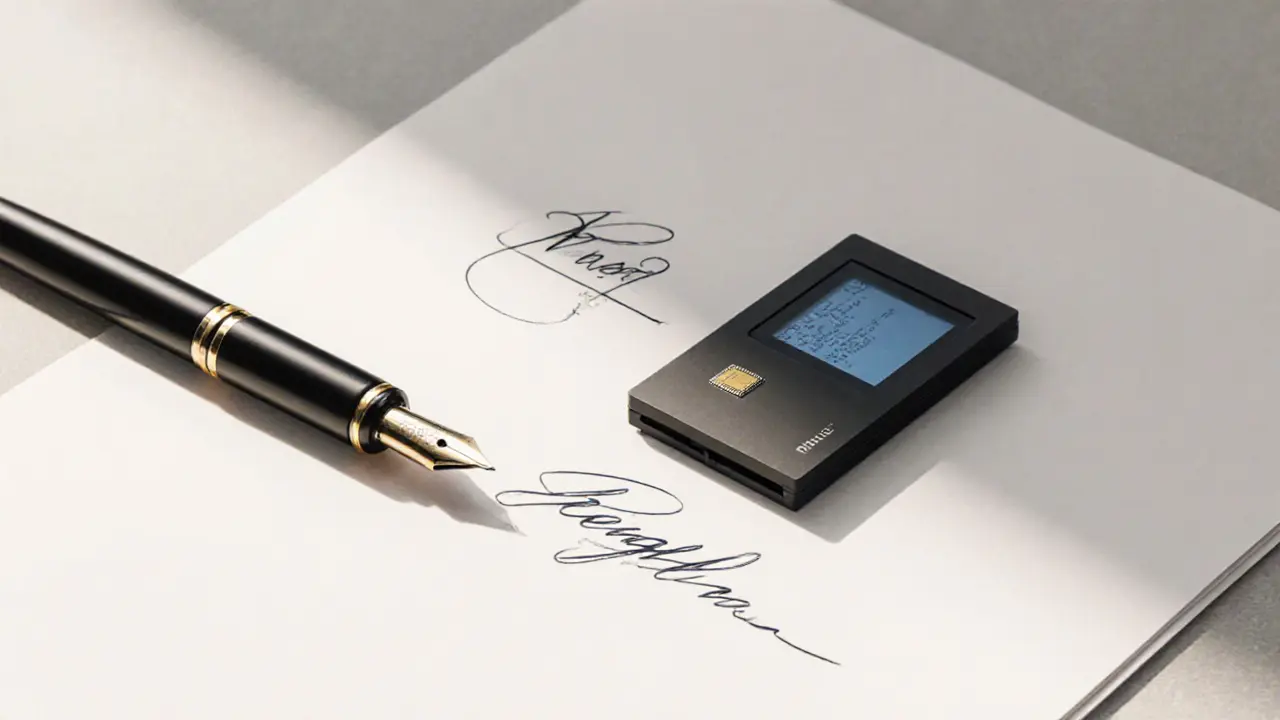ECDSA: The Core of Crypto Signatures
When working with ECDSA, the Elliptic Curve Digital Signature Algorithm that creates and verifies cryptographic signatures. Also known as Elliptic Curve Signature, it powers the security of most modern blockchains and many online services. ECDSA enables secure message authentication, ensures data integrity, and provides non‑repudiation for digital transactions.
ECDSA is a direct application of Elliptic Curve Cryptography, a family of cryptographic methods that use the mathematics of elliptic curves over finite fields. ECC offers comparable security to traditional RSA keys while using much smaller key sizes, which makes ECDSA fast and lightweight—perfect for mobile wallets and IoT devices. Because ECC reduces computational overhead, ECDSA signatures can be generated and verified in milliseconds, keeping user experience smooth even on low‑power hardware.
A digital signatures created with ECDSA consist of two numbers, called r and s, that together prove a private key holder authorized a transaction. The signature can be checked by anyone who knows the corresponding public key, but only the private key owner can produce a valid pair. This one‑way verification is what makes trustless systems like Bitcoin possible: miners validate transactions by confirming the signature without ever seeing the private key.
Underlying ECDSA is the broader concept of Public Key Cryptography, a cryptographic framework where a pair of mathematically linked keys—public and private—serve different roles. Public key cryptography facilitates secure communication, key exchange, and digital signatures across the internet. In the ECDSA workflow, the private key signs a hash of the transaction, while the public key verifies the signature, creating a clear separation of duties that protects user assets.
When you add blockchain into the mix, Blockchain Security, the set of cryptographic and consensus mechanisms that keep distributed ledgers tamper‑proof relies heavily on ECDSA. Bitcoin, Ethereum, and most newer layer‑1 networks store the signer’s public key in each transaction, letting every node instantly validate authenticity. This design prevents double‑spending, guards against fraud, and maintains a single source of truth without a central authority.
ECDSA doesn’t work in isolation; it pairs with cryptographic hash functions like SHA‑256 to compress transaction data before signing. The hash guarantees that even a tiny change in the original message produces a completely different digest, breaking the signature if tampered with. Together, the hash and the ECDSA signature form a robust proof that the data arrived unchanged from the rightful owner.
Developers can implement ECDSA with libraries in almost any language—OpenSSL for C, crypto in Node.js, or the eth‑keys package for Python. These tools abstract the heavy math, letting you focus on building wallets, smart contracts, or decentralized apps. Whether you’re a hobbyist testing a testnet or a fintech team securing high‑value transfers, understanding ECDSA’s attributes—key size, curve choice (secp256k1 is the Bitcoin standard), and signature format—helps you make informed security decisions.
Below you’ll find a curated list of articles that dive deeper into ECDSA’s role across crypto, explore related standards like ERC‑721, unpack tax implications for crypto traders, and more. Use this collection to sharpen your knowledge, spot practical tips, and stay ahead of the rapidly evolving blockchain landscape.

Digital Signatures vs Traditional Signatures in Crypto: A Practical Comparison
A clear comparison of digital and traditional signatures, covering how they work, security differences, blockchain use cases, and future post‑quantum trends.
